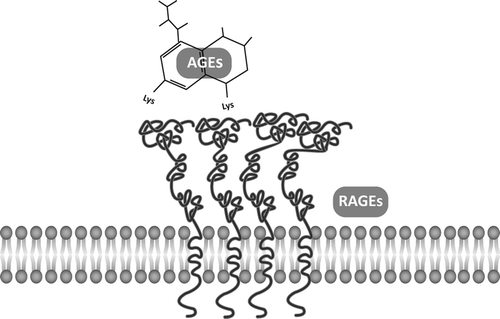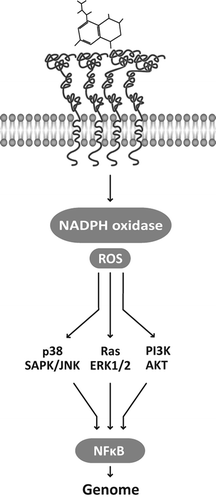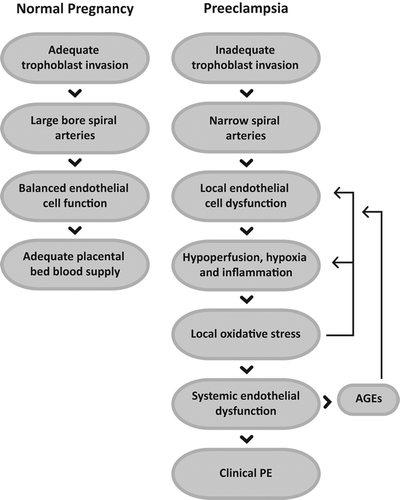Figures & data
Figure 1. AGE–RAGE interaction. The transmembrane receptor RAGE oligomerizes to interact with AGEs and other ligands.

Figure 2. AGE–RAGE interaction recruits NADPH oxidase, enhances reactive oxygen species production, and initiates a transductive cascade that may follow different pathways. They converge on the activation of the transcription factor NF-κB that promotes the expression of a variety of genes involved in inflammation, vascular cell proliferation or apoptosis and extracellular matrix turnover.

Figure 3. In the course of normal pregnancy, the trophoblast cell invasion of the uterine spiral arteries results in the replacement of their endothelium and wall cells, and consequent change of narrow arteries into large bore capacitance vessels. Adequate functioning of the new endothelium by appropriate signaling and the local microcirculation assures normal blood supply to the placental bed throughout the pregnancy.
In preeclampsia (PE), there is a deficient trophoblast invasion of the spiral arteries and reduced blood perfusion. Hypoxic conditions lead to endothelial cell dysfunction and frequently are a cause of small vessel occlusion that leads to further local hypoxia, inflammatory reaction, and arrival of monocytes and neutrophils that together promote oxidative stress. Its persistence amplifies the local condition into a systemic endothelial dysfunction and to enhanced AGEs production, which feeds additional endothelium dysfunction and becomes clinically evident PE.
